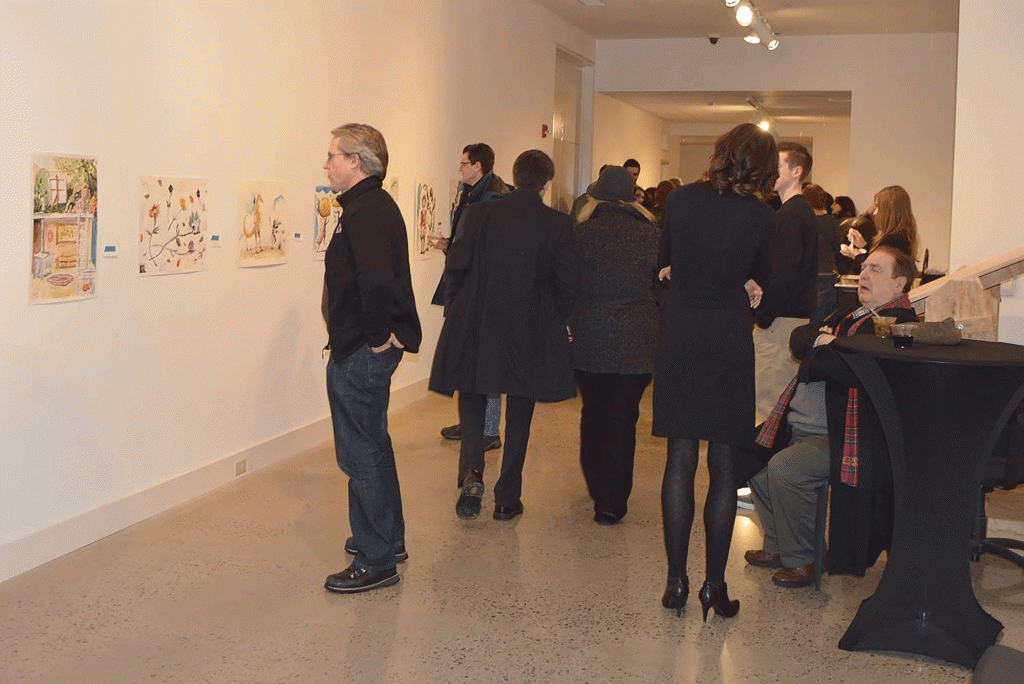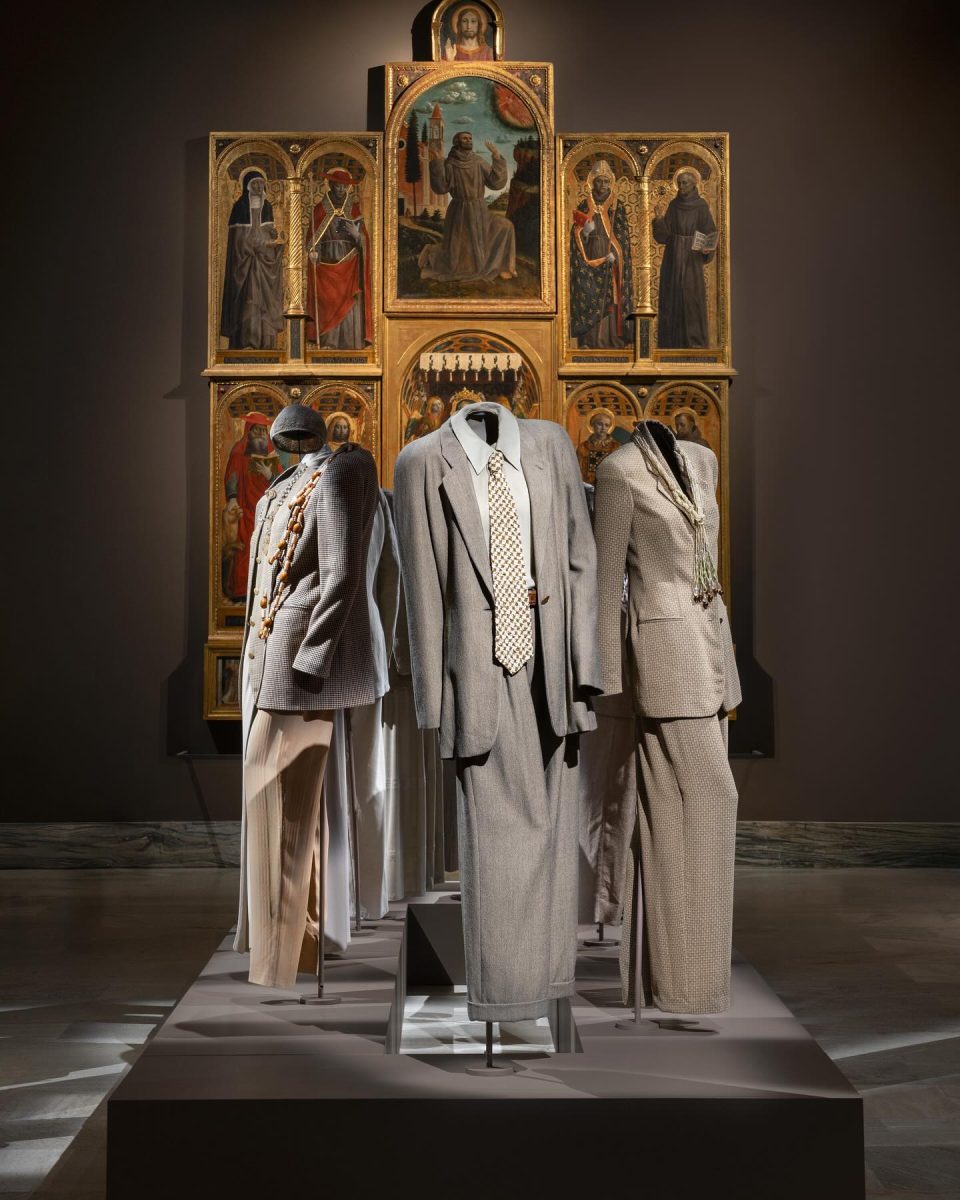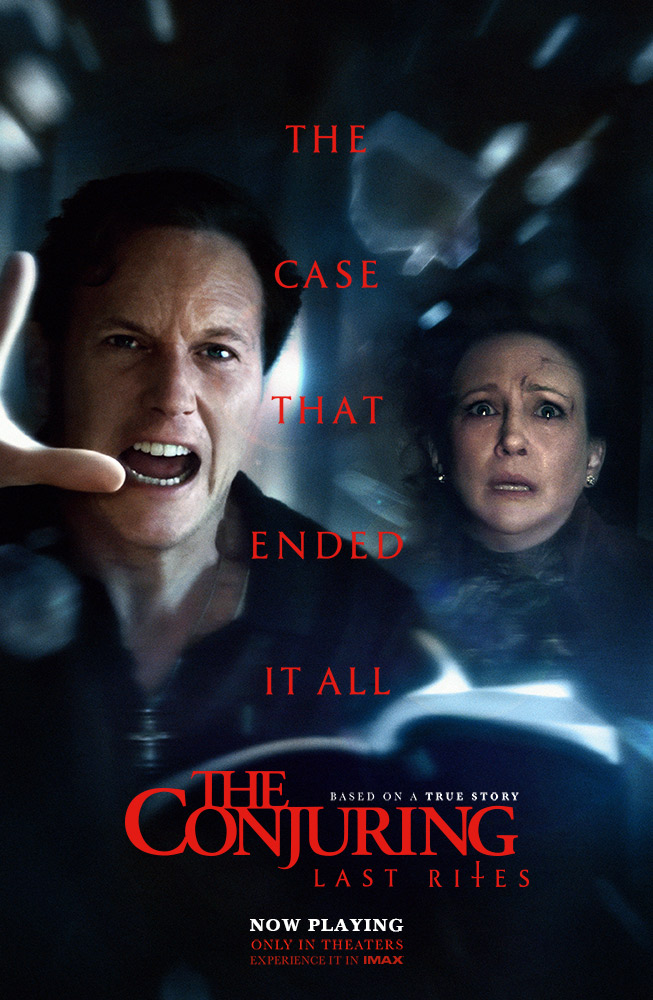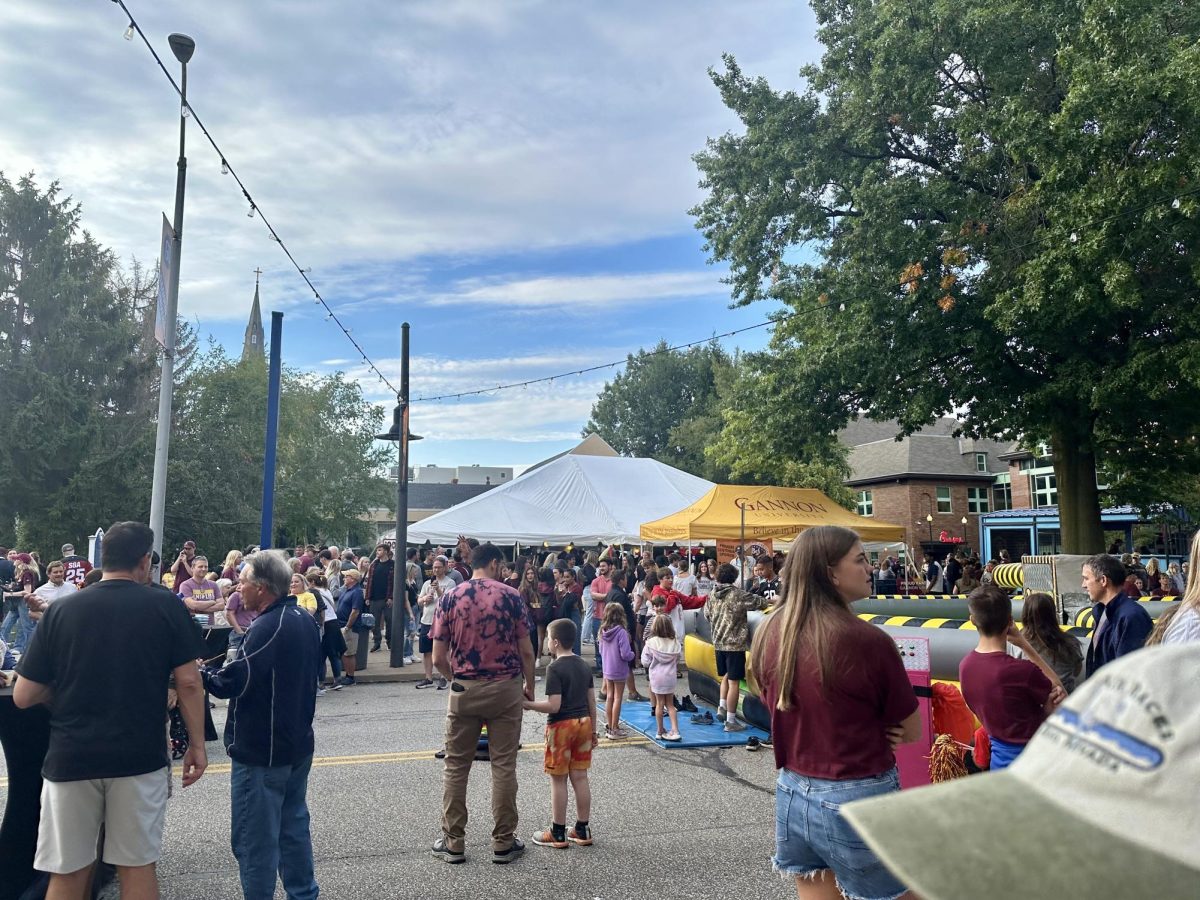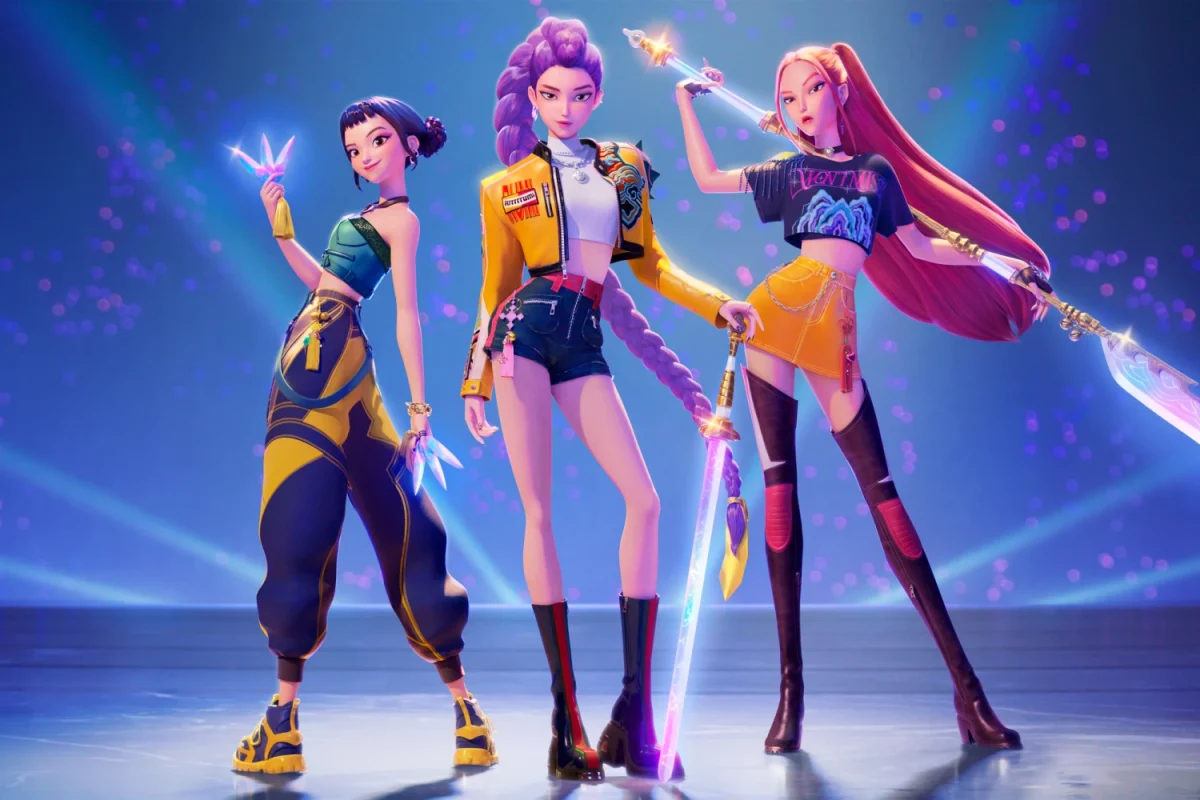With temperatures falling into the lower teens, it’s not surprising the streets of downtown Erie were in a solemn silence. Yet, in the Erie Art Museum, folks gathered together to celebrate art, creativity and originality.
The art community of the region feasted upon the works that were either created in the museum space or created specifically for the museum space.
Mark Weber, a former Erie resident, was producing mixed media paintings in very short periods of time – for three days in the Bacon Gallery. Ian Brill, on the other hand, began designing his installation piece, Storm, almost a year ago, but constructed and programed the piece on site in the McCain Family Gallery.
Before Friday’s reception, I saw Weber and Brill and spoke to them about their work.
Roman Denisyuk – Why do you make art?
Mark Weber – To share the energy of art. To see, to push the limit of what a person can do within a time frame. To make art. Period.
Ian Brill– Self-help.
R.D. – When did you start to develop your own style?
M.W. – I think you’re always discovering new ways to go about things. Every 10 years you reinvent yourself; I think that’s the same with art. You reach a level and you keep growing. In a nutshell, I really don’t think you ever – as an artist – just say, “OK, I’ve reached it.” You keep pushing.
I.B. – This particular piece comes from me sort of having a bit of distaste for how we relate to technology and technological art.
From there I became more interested in the idea about how our relationships with technology are not indifferent from a moth banging its head against a light bulb. Somewhere in between there has been some consideration about aesthetics, film theory, principles and elements of design, psychology and process philosophy: the idea of becoming as opposed to being a static idea.
R.D. – What would you say to those in today’s society who frown upon the arts as a career?
M.W. – They’re missing out on a beautiful part of life. I mean there’s art everywhere you look, whether they realize it or not. They’re not the type of people I would hang out with.
I.B. – If everything that you do is based on some quantifiable analysis of stuff that you got from your smartphone instead of actually looking in front of you, what did you really do in your life? So, using that as a bit of a metaphor, there’s something to be said for embracing your individuality and creativity.
R.D. – How would you define art or justify something as art?
M.W. – For a person to say I have created art – to them that’s art and that’s fine. Art has a lot to do with promotion; the modern painters – a lot of people hated. But it was art and they were just pushing it. I believe the definition of art changes over time.
I.B. – Art is something that artists are supposed to redefine. Art is communication. Art is finding some way of communicating in a manner that’s more eloquent than using existing murals – existing vernacular. Words are just murals that have been around forever and sometimes you have to communicate something a little bit more ephemeral and intuitive. When that happens, you no longer rely on what exists – you’re compelled to do something unique.
R.D. – What do you rely on besides your imagination and intuition when creating art?
M.W. – Literature means a lot to me. I would say 50 percent of it comes from stories. I consider myself more of a storyteller.
I.B. – I rely on my insecurity more than anything. I’ve gotten to a point in my life where I realize just how little I know – I realize I’m totally insecure. The people around me are a constant reminder of how the more I know, the less satisfied I’ll be with my own knowledge. The only thing that allows me to make art such as this is ADD (Attention Deficit Disorder).
R.D. – As an individual who struggles daily with ADD, do you have any advice to those who face a similar struggle?
I.B. – Why run? What’s the point of running from anything? Running is what leads to ignorance.
Continuity – if there’s one thing I got out of calculus it’s an appreciation for continuity. If you’re too scared to face reality, you won’t see the world in continuity. You’ll follow yourself in situations where you make ethical and moral compromises out of insecurity. It’s one of the reasons why I do this kind of art. It terrifies me. It also forces me to engage the public and gives me a platform where I’m comfortable.
My fear of not being confident is what allows me to have a veneer of confidence. Face things — face yourself. That’s what being an artist is: facing your own self.
R.D. – As an illustrator, do you have any advice to aspiring artists?
M.W. – Draw. Draw. Draw. Draw. Draw. Whenever you have time, have your sketchbook and just keep drawing. Just keep pushing. I think everything is based in drawing. And the more you do, the chance of you finding your own voice is better.
Even though Weber and Brill have different approaches to art, the reason why the make art, the reason why they promote art, it’s very similar — almost parallel.
Their work will be on display in the Erie Art Museum through December 2015.
ROMAN DENISYUK


